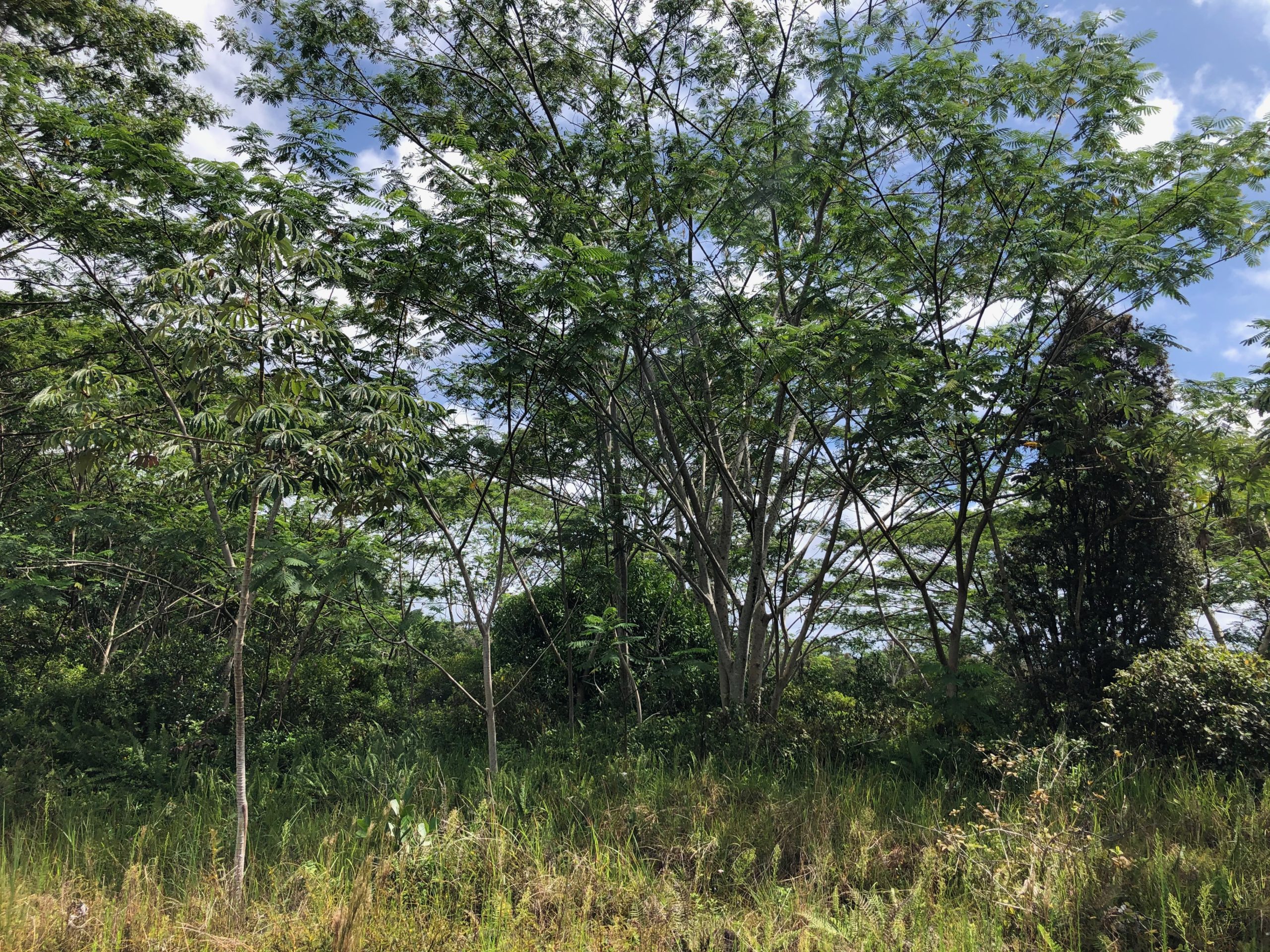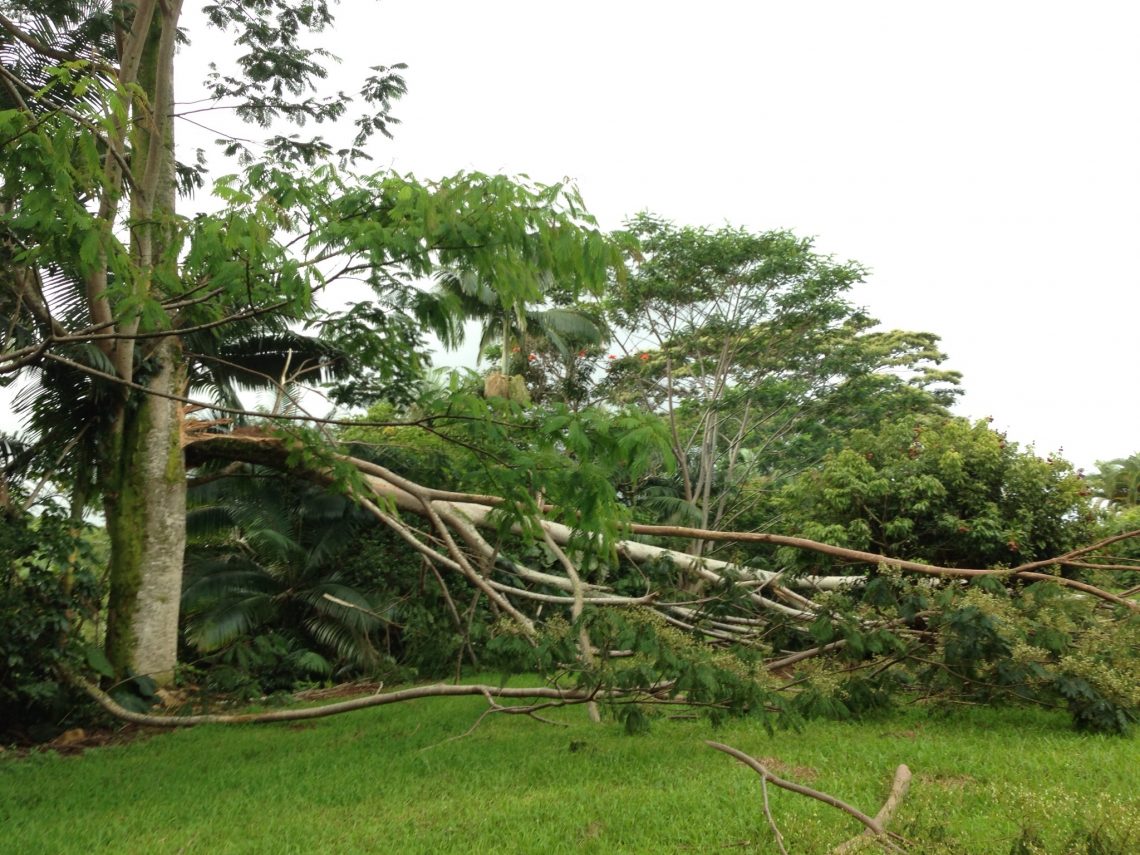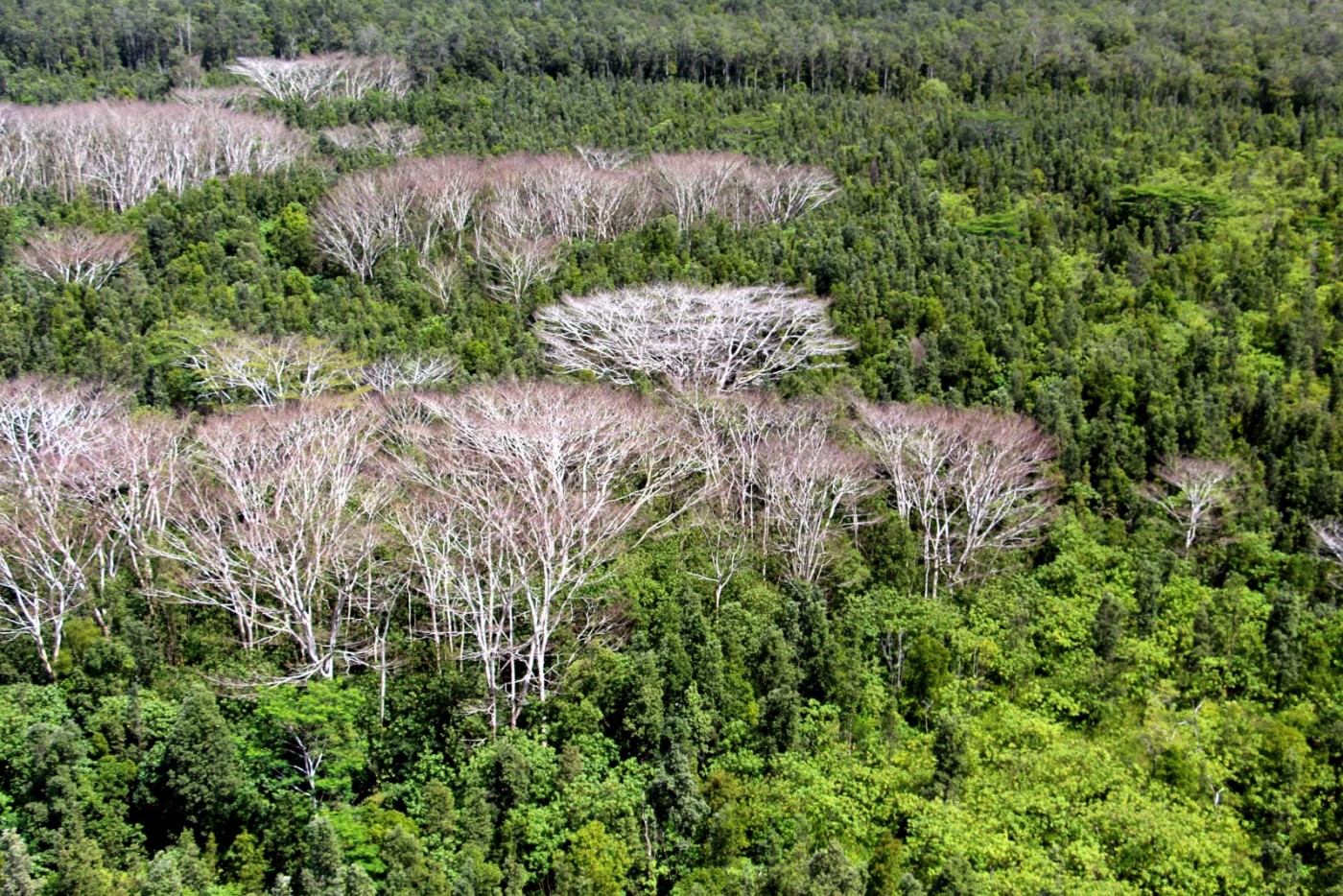
Albizia
Albizia (Falcataria moluccana) was introduced to Hawai‛i from the Moluccan Islands in Indonesia over 100 years ago. Territorial foresters at that time were concerned about eroding slopes due to the impacts of cattle ranching and logging, and they wanted to plant fast-growing trees. When the sugar cane industry collapsed, albizia invaded abandoned cane fields and spread even further throughout the islands.
After Tropical Storm Iselle in 2014, dozens of people were trapped for hours, and several homes were crushed by falling albizia. HELCO estimates that it spent $13M responding to damage from Tropical Storm Iselle in 2014, and has spent additional millions of dollars in repairs of lines and poles after high wind events in the last few years.
Albizia (Falcataria moluccana)


Photos (L-R): BIISC
Impacts:
- Large branches have been recorded breaking and falling in heavy rain or with minor wind gusts of 35 mph
- Prone to ‘sudden limb drop’, where limbs will break off and fall with no apparent disturbance
- Albizia readily sprout and grow along roadsides and can become hazardous to public safety within a few years
- Albizia has a huge economic cost for taxpayers and citizens of Hawaii. HELCO spent an estimated $13M responding to damage from Tropical Storm Iselle, and has spent additional millions of dollars in repairs of lines and poles after high wind events in the recent years.
- Fallen trees and branches can block streams, resulting in debris accumulation and flooding.
- Canopy blocks the sunlight and its shallow roots hog all available rainfall. Seedlings of many native species are unable to grow in the shade of albizia.
Controlling Albizia
Physical control: Albizia seedlings can be pulled out by hand before their root system becomes well-established. There are two techniques that you can choose from to control larger, non-hazardous trees.
- Girdling: This method entails the complete removal of a band of the inner and outer cambium layers approximately six inches to one foot wide from around the entire circumference of the tree.
- Common tools used to strip the bark from the tree include hand tools such as a machete, hatchet, or handsaw.
- Typical results include defoliation within one year followed by tree death. This method is fairly labor intensive and repeat treatments may be necessary.
- Ring-barking: This control method entails the complete removal of the inner and outer cambium layers from around the entire circumference of the tree.
- Common tools used to strip the bark from the tree include hand tools such as a machete, bark, spud, or draw blade.
- First, incisions are made round the base of the target tree at soil level. The bark is then stripped from the soil up the trunk (approx. 4-6 feet).
- This technique is fairly low cost and can be used by virtually anyone. Results are highly effective with defoliation occurring between six months to one year, and death of the tree eventually following.
Chemical control: Application method – Incision-Point Application (IPA)
- Effective herbicides:
- Milestone (100%) – label
All dead trees have the potential to be dangerous. The methods described below are NOT recommended for large trees that are overhanging structures, roads, and power lines. For these hazard trees, contact a certified arborist for removal.
More information on Albizia
- Large trees or trees that pose a potential hazard should be risk-assessed and removed by a certified arborist. A list of arborists who remove albizia can be found here.
- We have helpful resources for reporting hazardous albizia on neighboring properties.
- Learn more about our Albizia Assassins community program.
